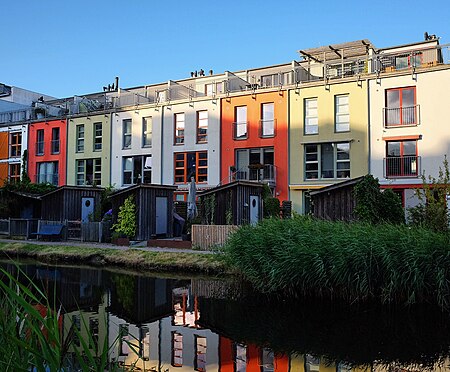Bo01

Bo01 (also known as the "City of Tomorrow") is a neighborhood in the southern city of Malmö, Sweden known for its sustainable development and design. Bo01 began as part of the European Housing Exposition in 2001 and served as a prototype to help later design Västra hamnen. Today, Bo01 is known for its holistic approach to incorporate sustainable design into high-quality living and serves as one of the first Swedish models for sustainable urban planning.Designed by an urban designer, Klas Tham, Bo01 is the first neighborhood in the world to declare that 100% of its energy is sourced entirely from renewable sources. The name Bo01 stems from the Swedish verb "Bo" meaning "to dwell," and 01, short for 2001. The most notable building built for Bo01 was the Turning Torso skyscraper, which became the tallest residential building in Scandinavia. It was however not completed in time for the start of the housing exposition, and was completed later in 2005.
Excerpt from the Wikipedia article Bo01 (License: CC BY-SA 3.0, Authors, Images).Bo01
Stortorget, Malmo Old Town (Norr)
Geographical coordinates (GPS) Address Nearby Places Show on map
Geographical coordinates (GPS)
| Latitude | Longitude |
|---|---|
| N 55.605869444444 ° | E 13.000730555556 ° |
Address
Stortorget
Stortorget
Malmo, Old Town (Norr)
Sweden
Open on Google Maps











